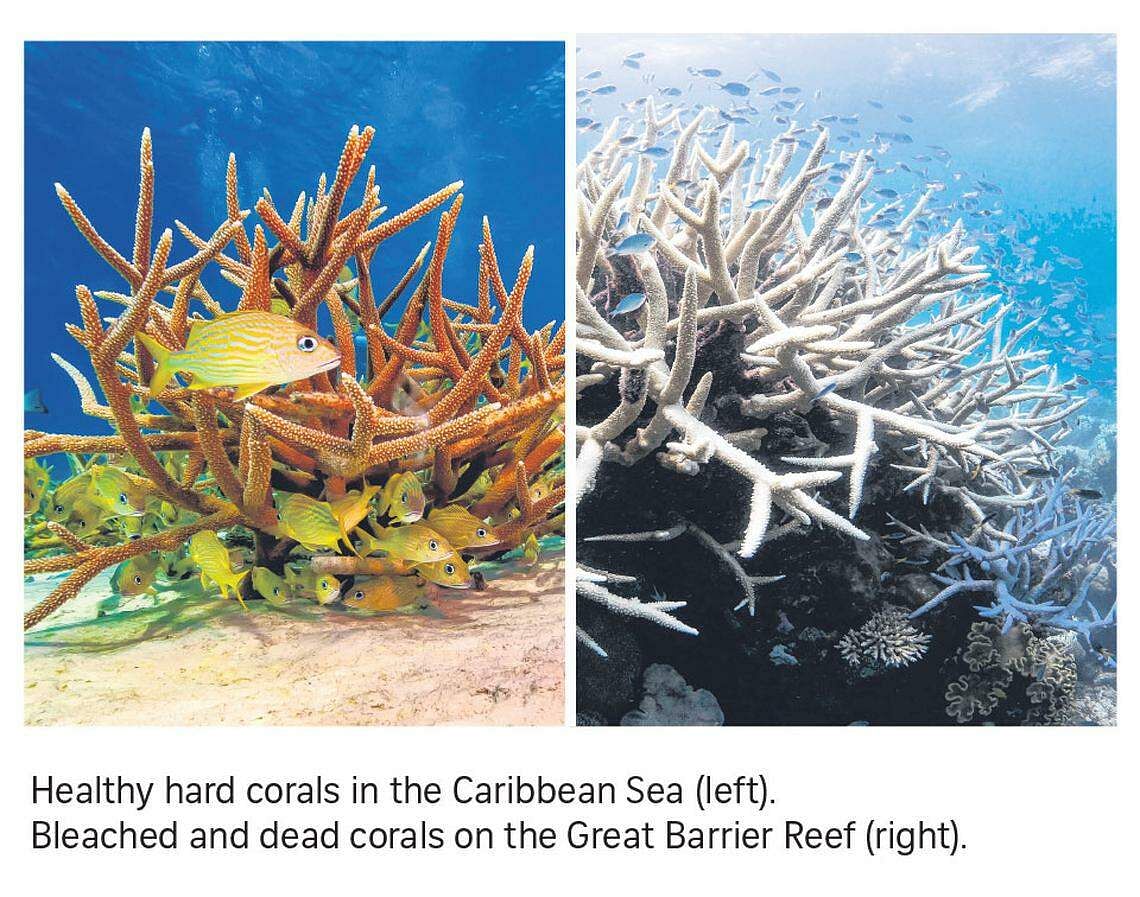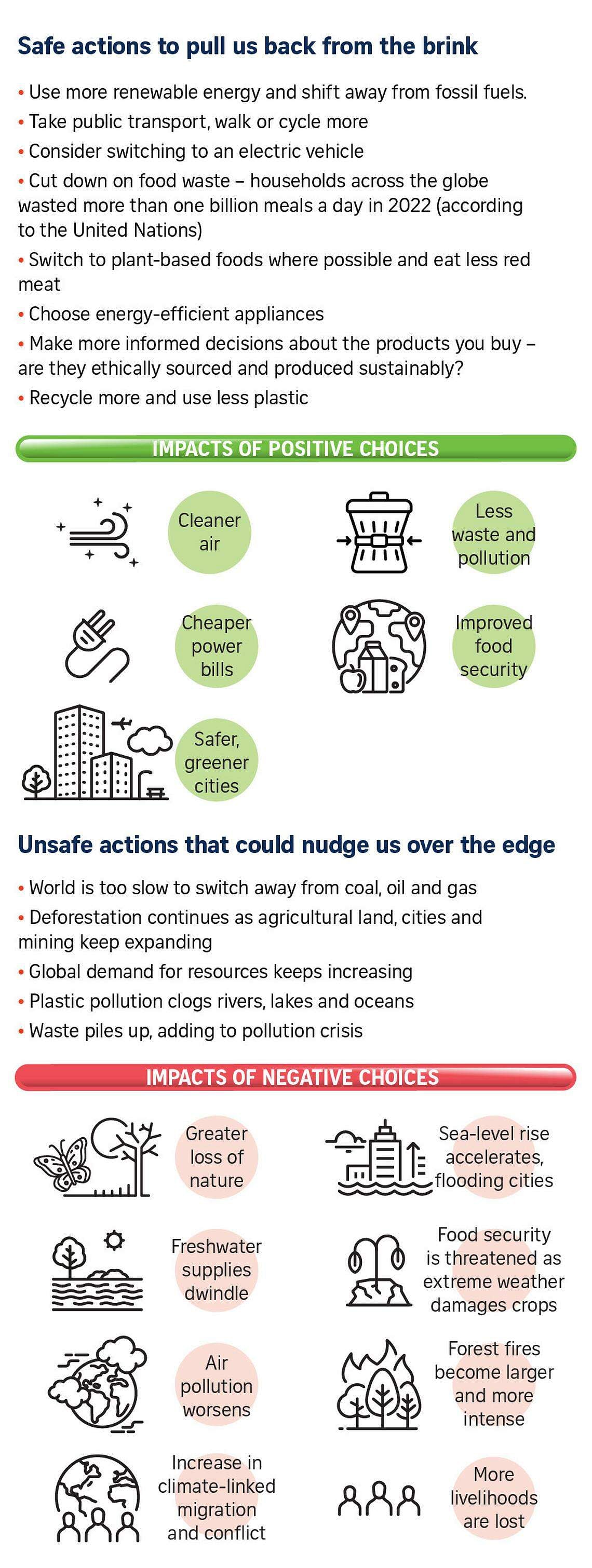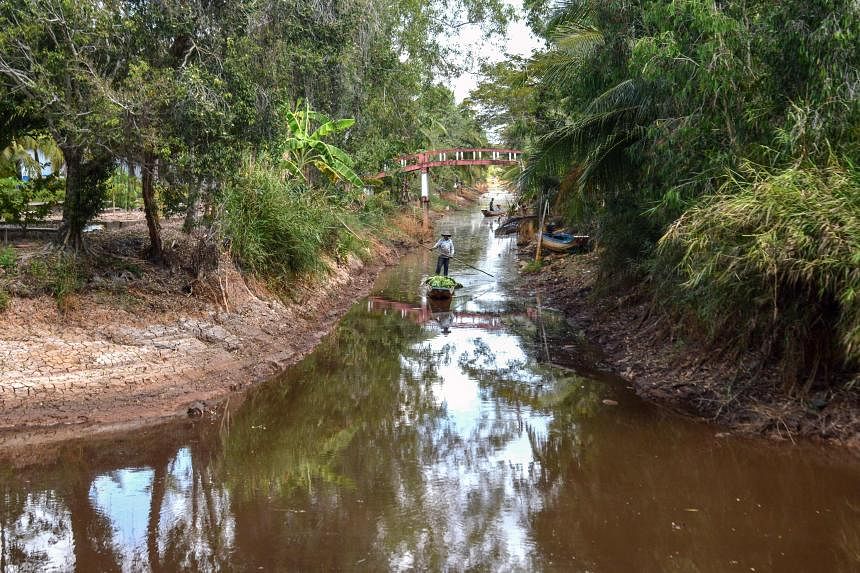Understanding tipping points
What are tipping points?
Think of a ball at the top of an incline. One small push could send it over the edge to the other side.
Many of the earth’s natural systems are at, or near, this limit. They are at risk of being tipped over into a new and more dangerous state by human activity.
Why are they dangerous?
Tipping points can trigger abrupt and irreversible changes that can have devastating impacts across the globe. They are a cause for worry because societies are ill-prepared for a sudden shock. What’s more, the risk is growing that one tipping point may trigger others, like dominoes falling.
How many tipping points are there?
There are 26, according to a major study published in December 2023 led by the University of Exeter and funded by the Bezos Earth Fund.
Sixteen involve the living parts of the planet, or biosphere, such as savannah and dryland degradation, loss of mangroves and seagrass meadows and collapse of fisheries.
Six are in the icy parts of the planet, such as loss of glaciers and ice caps.
Four involve critical parts of ocean and atmosphere circulation.
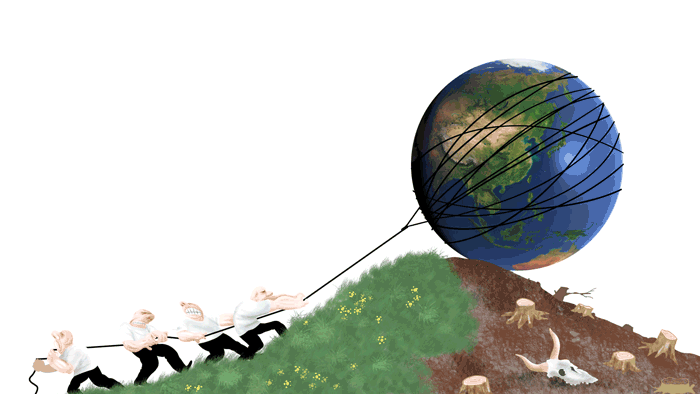
Major tipping points of concern
There are already a number of tipping points at risk of being crossed due to global warming right now or in the near future, according to a University of Exeter study that involved more than 200 scientists.
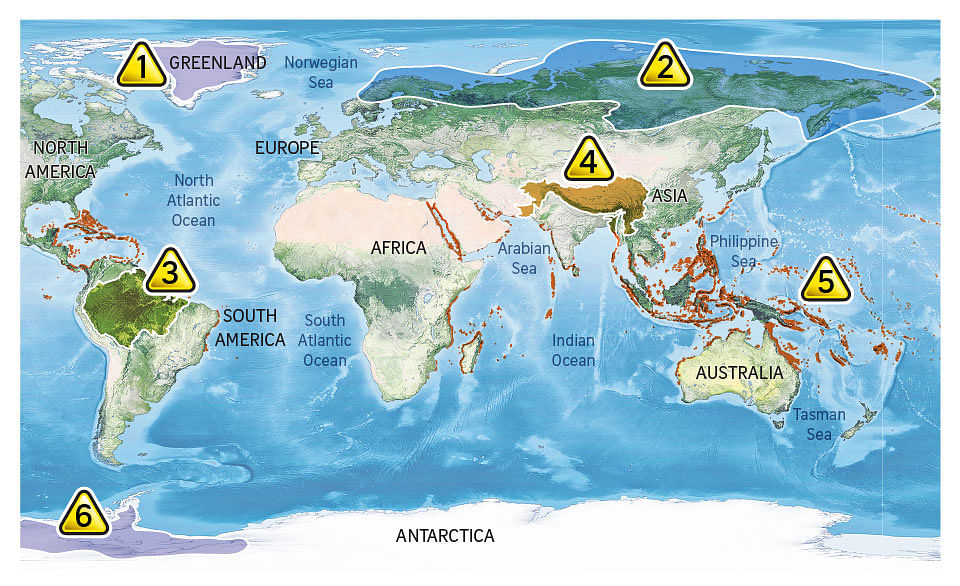
1. Collapse of the Greenland ice sheet
The concern: Global sea-level rise and coastal flooding
2. Accelerated melting of carbon-rich permafrost in the far Northern Hemisphere
The concern: The release of large amounts of carbon dioxide and methane, two potent greenhouse gases, which would speed up global warming
3. Dieback of parts of the Amazon rainforest
The concern: Rainforest dries out and becomes savannah, increasing local temperatures and disrupting regional weather patterns
4. Accelerated melting of glaciers in the Hindu Kush Himalayan region
The concern: Reduced river flows and freshwater supplies for people and agriculture
5. Loss of warm-water coral reefs
The concern: Loss of fisheries and livelihoods
6. Collapse of the West Antarctic ice sheet
The concern: Global sea-level rise and coastal flooding
What are the risks for Asia?
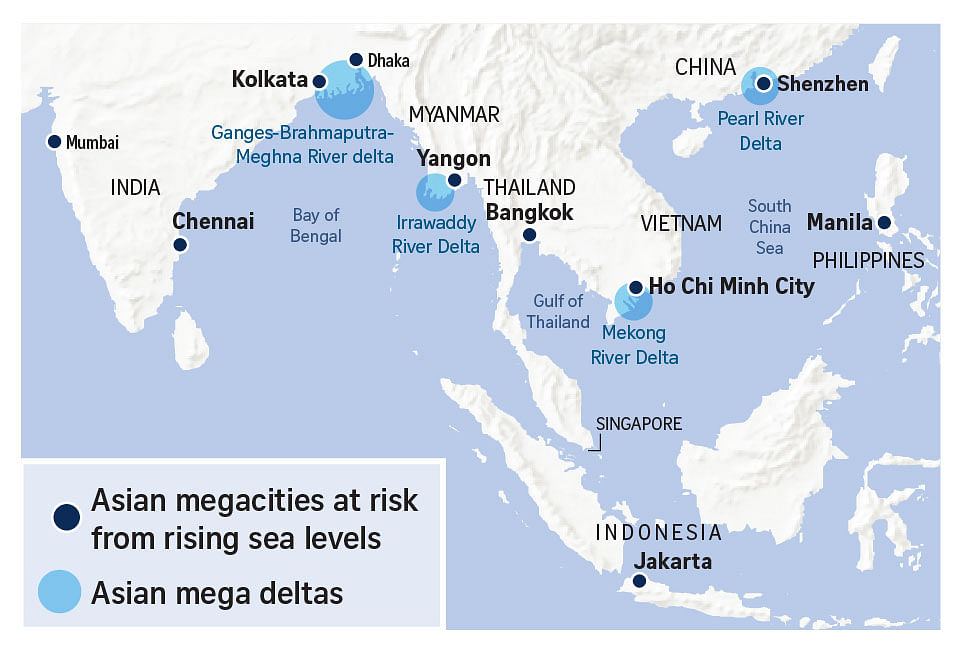
Asia faces a number of acute tipping point risks. Here are three of them:
1. Rising sea levels from melting ice caps in Greenland and West Antarctica
- Global sea levels have already increased in recent decades, in part because the oceans are getting warmer (water expands as it warms), but also because of faster melting of ice caps.
- If the Greenland and West Antarctic ice sheets melted, they would increase global sea levels by an average of 10m. Greenland is losing 30 million tonnes of ice an hour, a recent study said. By 2150, global average sea levels could rise by 1.5m or more, and the rate of sea-level rise is already accelerating.
Impacts
The melting of ice sheets would affect hundreds of millions of people around the world, especially in Asia’s coastal megacities and fertile river deltas.
Hindu Kush Himalayan region
- It stretches over 3,500km and across eight countries – Afghanistan, Bangladesh, Bhutan, China, India, Nepal, Myanmar and Pakistan.
- It is the water source of 10 of Asia’s largest rivers.
2. Accelerated melting of mountain glaciers
- The Hindu Kush-Himalayan region, which includes the Tibetan Plateau, is a vital source of water for nearly two billion people in China, South Asia and Indo-China.
- Major rivers, such as the Mekong, Indus, Brahmaputra and Yangtze, all begin in this icy mountainous region known as the Third Pole.
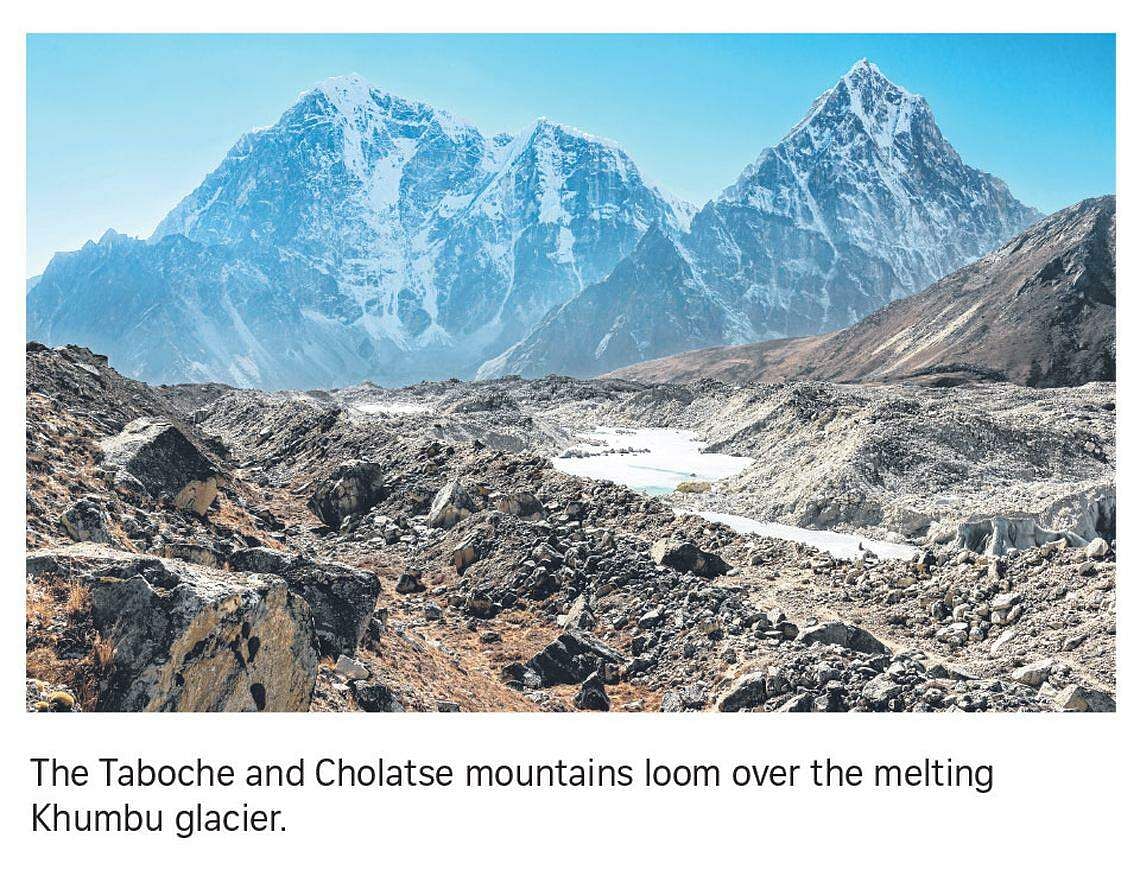
Impacts
The glaciers could lose 80 per cent of their current volume by the end of this century.
This would jeopardise freshwater supplies in the 12 rivers that flow across 16 nations in the region, affecting agriculture, industry and cities downstream. Dwindling water supplies could also lead to conflicts.
In addition, rapid glacier retreat:
- Destabilises adjacent slopes and increases likelihood of large landslides.
- Creates glacial lakes that could burst and unleash abrupt, destructive floods.
These pose great danger to people and property downstream.
3. Loss of tropical coral reefs
In Asia, hundreds of millions of people rely on coral reefs for food, tourism and culture. Reefs are also critical in protecting coastlines from storms.
Impacts
The region’s reefs are in trouble from rising ocean temperatures, causing periodic bleaching that can kill corals. Overfishing and damage to reefs from destructive fishing practices and pollution are also taking a toll.
The United States’ National Oceanic and Atmospheric Administration said on April 15 that the world is experiencing its fourth mass coral bleaching event on record, which could see swathes of tropical reefs die. Much of the 2,300km length of Australia’s Great Barrier Reef is suffering severe bleaching.
